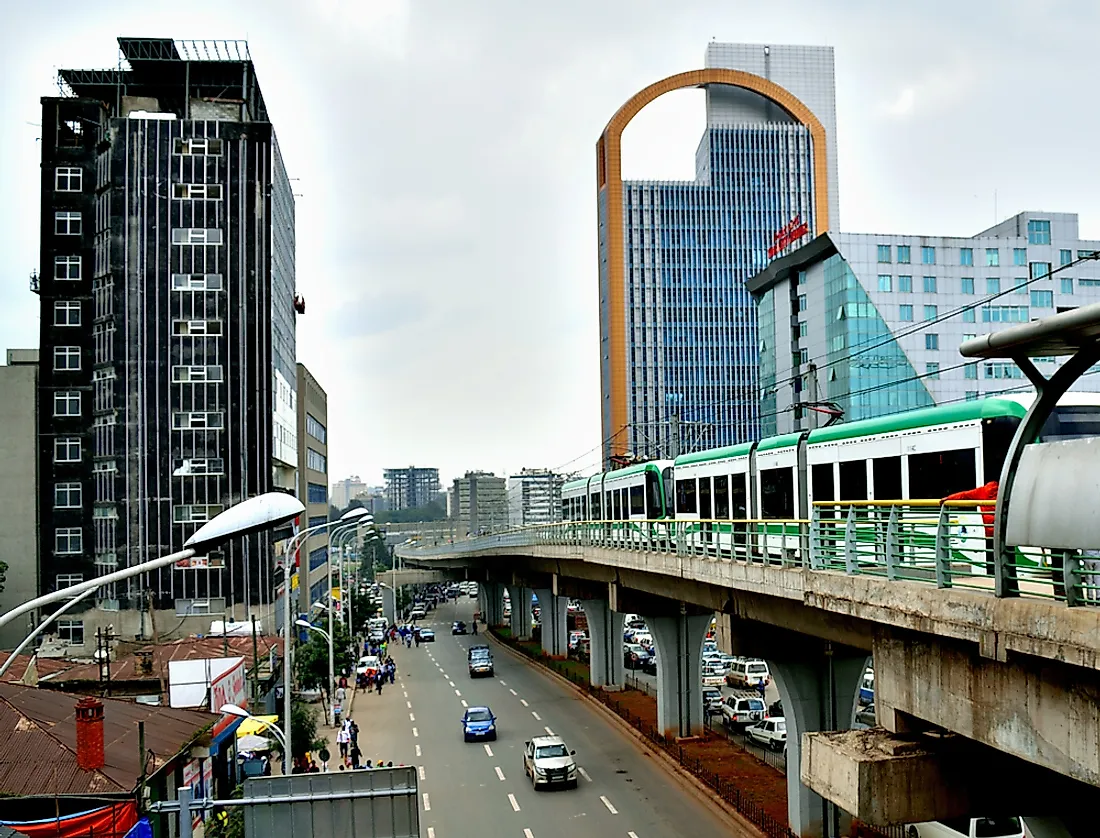What Is The Capital Of Ethiopia?

Where Is Ethiopia?
Ethiopia is a nation located in the Horn of Africa. The country encompasses an area of 1,100,000 square km and has a population of more than 102 million inhabitants, making it the continent’s second-most populous nation. Ethiopia is bordered by Eritrea to the north and northeast, while Kenya borders Ethiopia to the south. Sudan and South Sudan border the country to the west, and Somalia and Djibouti are located to the east.
What Type of Government Does Ethiopia Have?
Ethiopia is governed as a parliamentary republic, in which the Prime Minister serves as the head of government. The country's legislative power is vested in a two-chamber parliament, composed of the Council of People's Representatives (547 members) and the Council of the Federation (110 members). The judiciary operates independently of the executive and legislature branches of government.
What Is the Capital of Ethiopia?
Addis Ababa is the capital of Ethiopia. The city has an area of 527 square km, a population of approximately 3,384,569, and a population density of 5,165.1 persons per square km. It is the biggest city in Ethiopia and the ninth biggest city in Africa by population. Addis Ababa is located at the foot of Mount Entoto, in a grassland biome which is part of the Awash River’s watershed. The city is situated at an elevation that ranges from 7,631 feet to 9,800 feet. Addis Ababa is chartered city, meaning that is considered as both a city and a state. In addition to being the capital of Ethiopia, the city also serves as the African Union’s headquarters. Various other international and continental organizations have headquarters or offices in Addis Ababa.
History of Addis Ababa
A settlement at the site of Addis Ababa was first established in 1886 by Emperor Menelik II, who ruled Shewa, a historical region of Ethiopia. The site was selected by his wife, Empress Taytu Betul, who ordered the building of a house at the site where she and other members of the royal family could take mineral baths in the region’s hot springs. Soon, houses of the nobility and their staff were built in the area. Inspired by the expansion of the settlement, the Emperor commissioned the building of the Imperial Palace to serve as the residence of the ruling family. When Menelik II became the Emperor of Ethiopia, the city was named Addis Ababa. It grew rapidly and emerge as one of the important cities in Africa. For a short period of time, during the occupation of Ethiopia by Italy between 1936 and 1941, Addis Ababa served as the Duke of Aosta's capital. The city was named the capital when Ethiopia regained its independence.
Role of Addis Ababa As the Capital of Ethiopia
As the seat of Ethiopia's national government, Addis Ababa is home to the country's main government institutions, departments, and offices. These include the Imperial Palace, which serves as the residence and office of the Prime Minister, and the Ethiopian Parliament Building. The importance of Addis Ababa extends beyond its role as the capital of Ethiopia, as it is also referred to as "the political capital of Africa."











